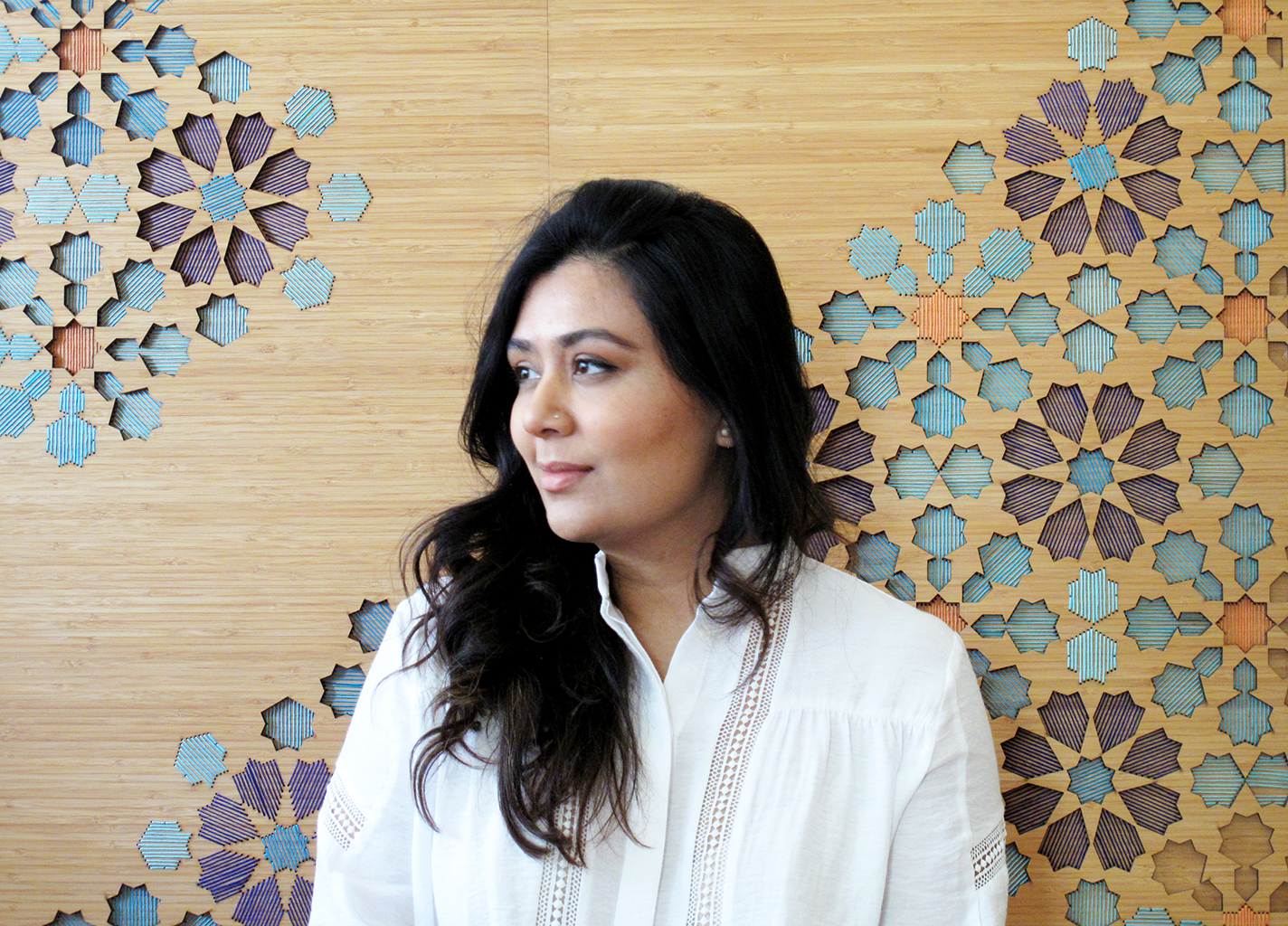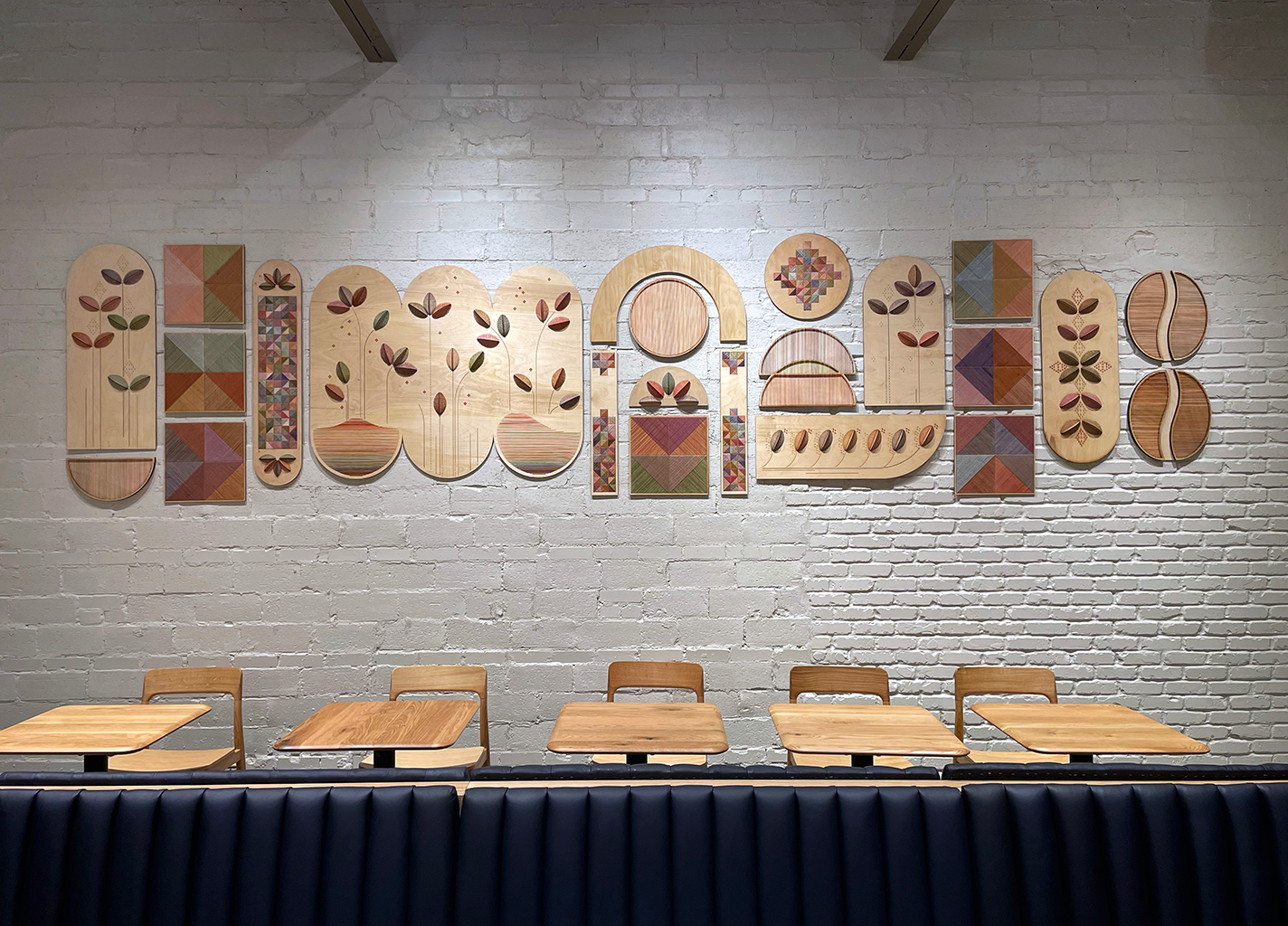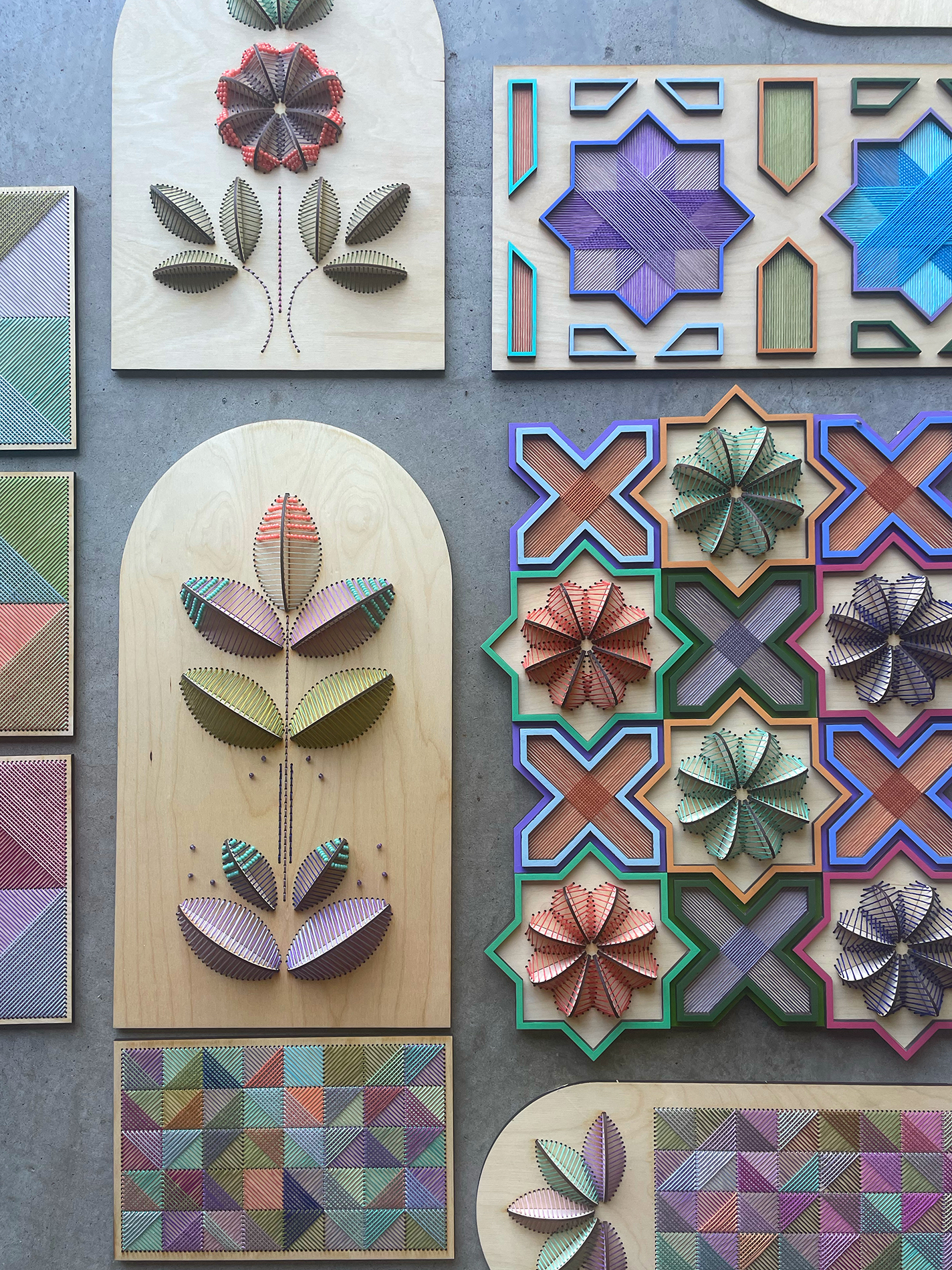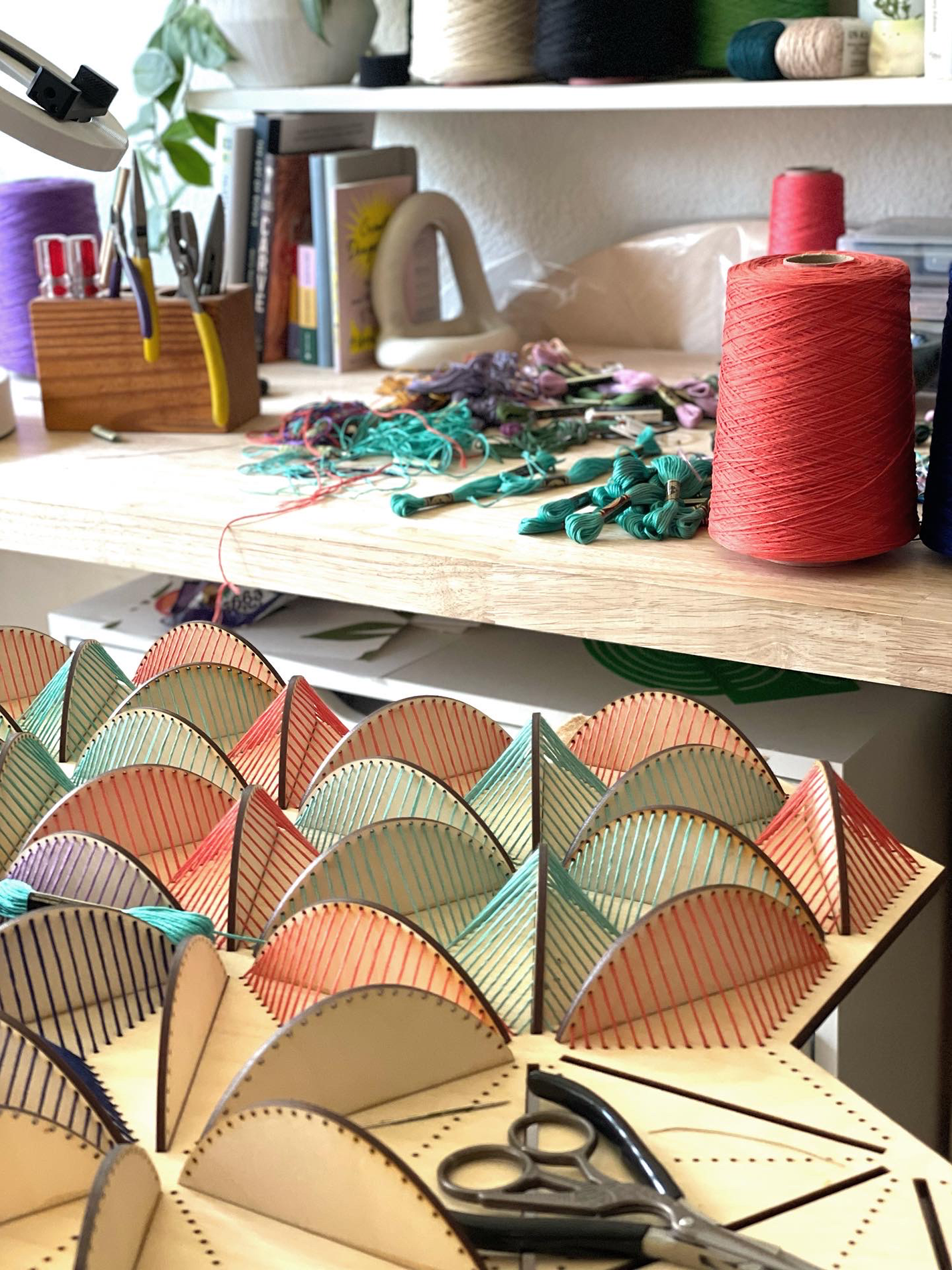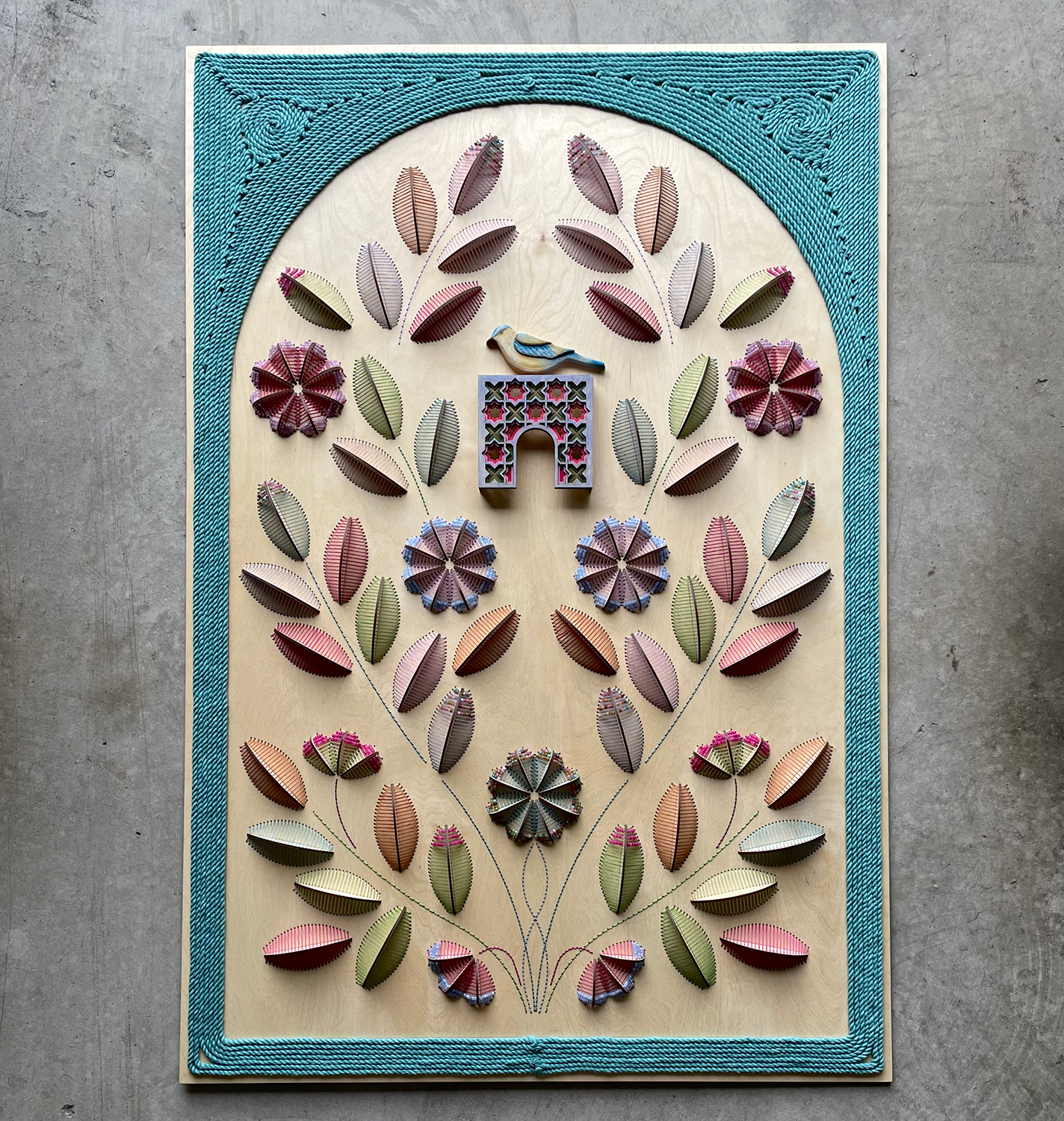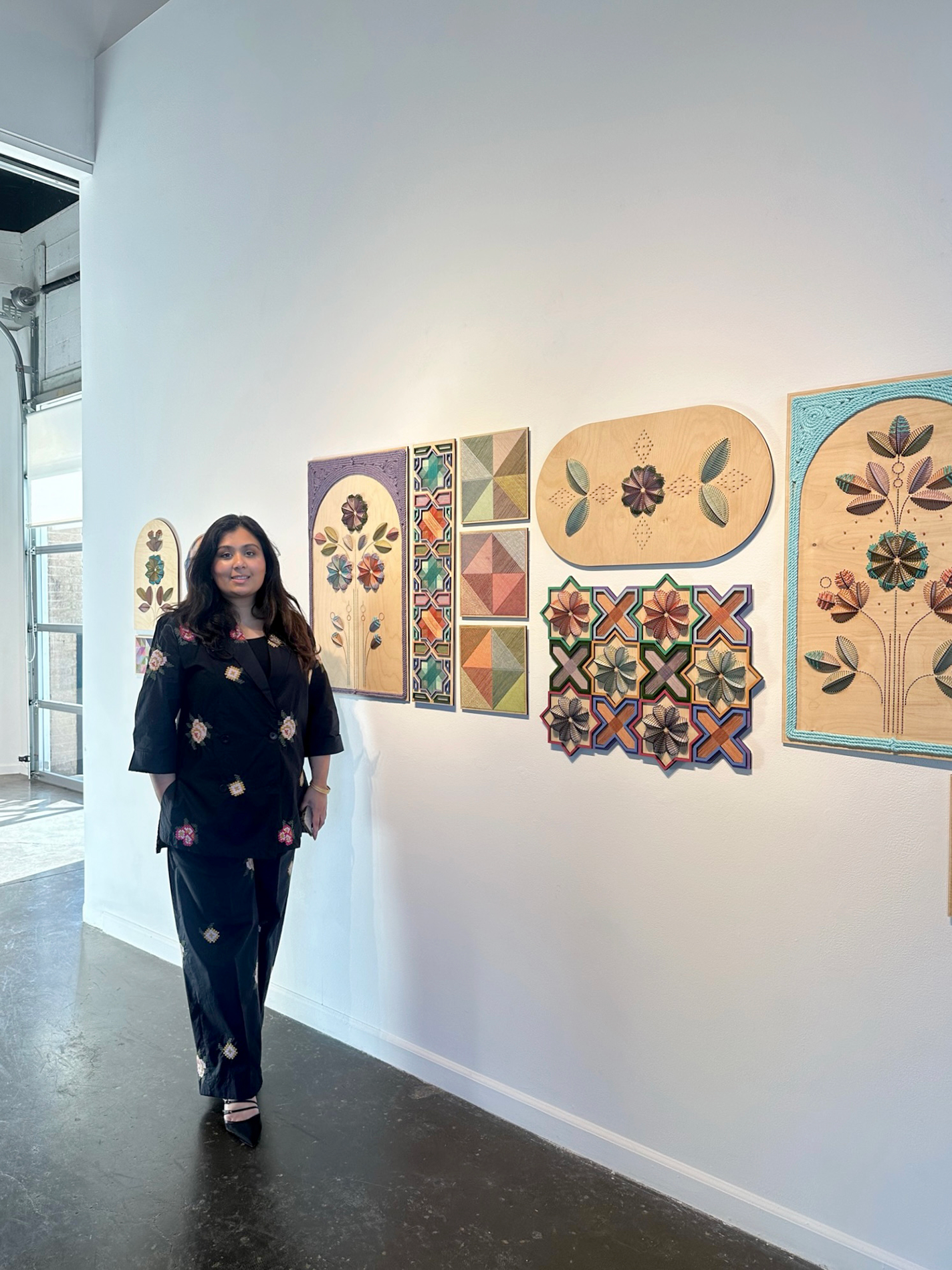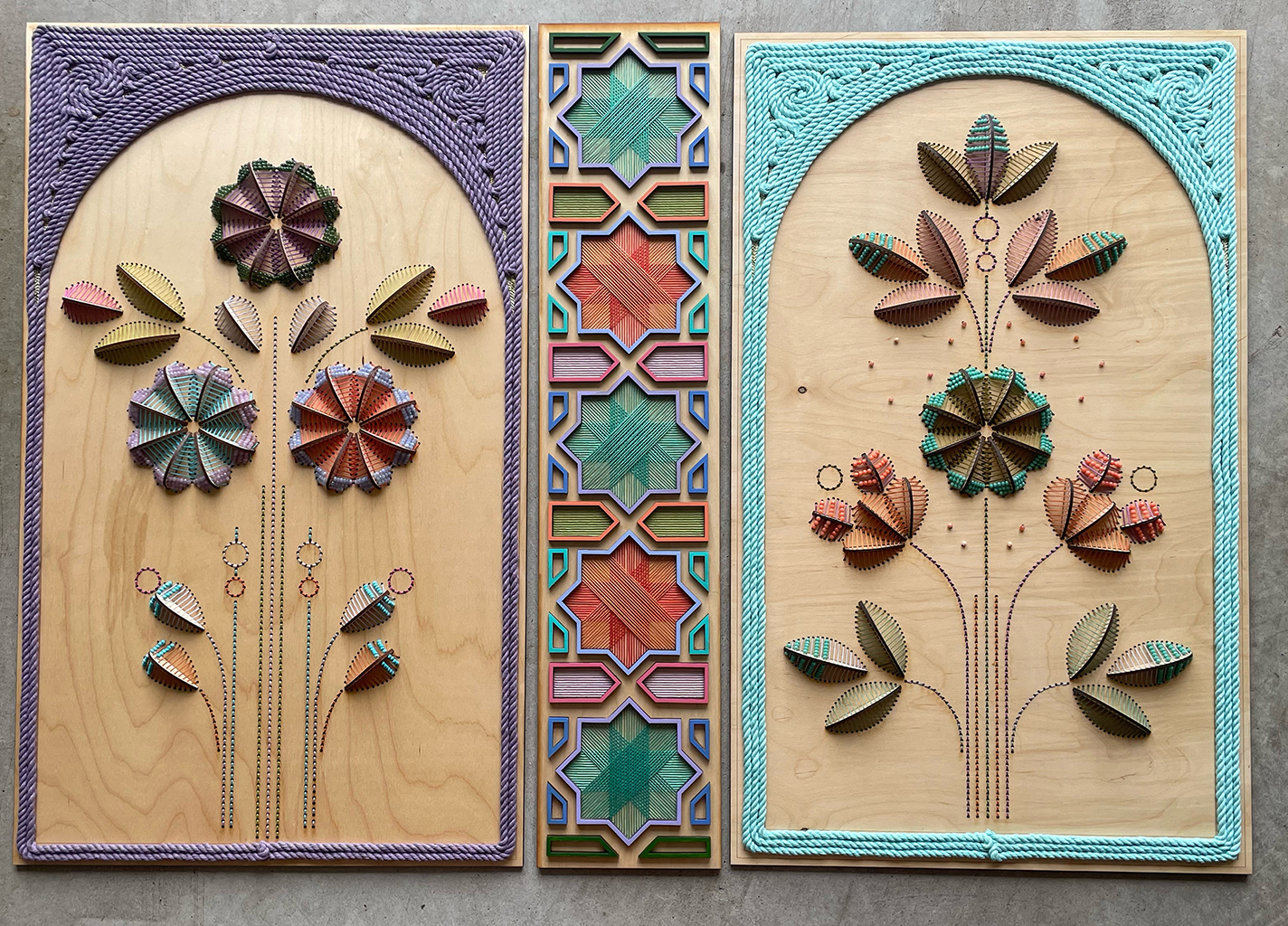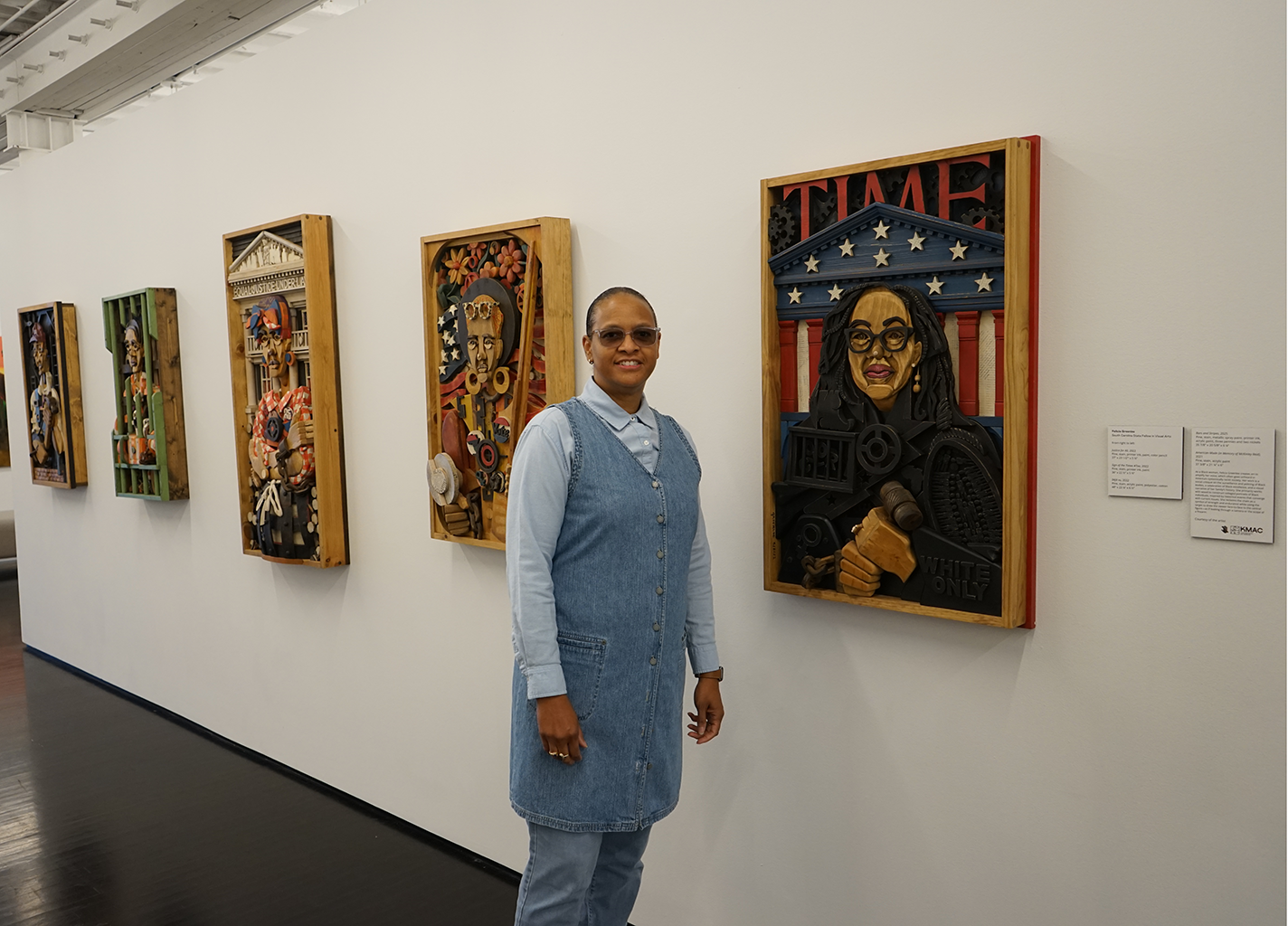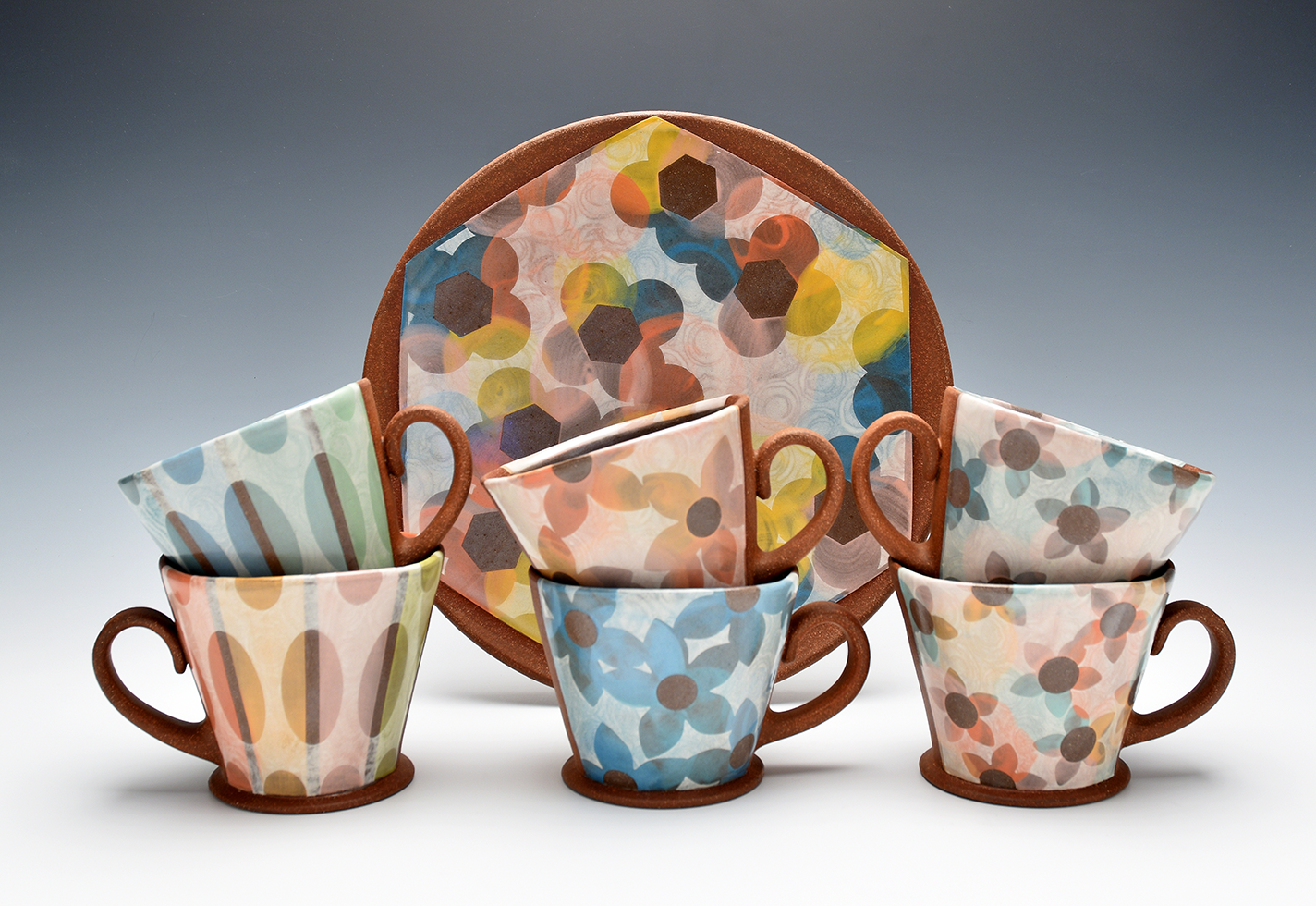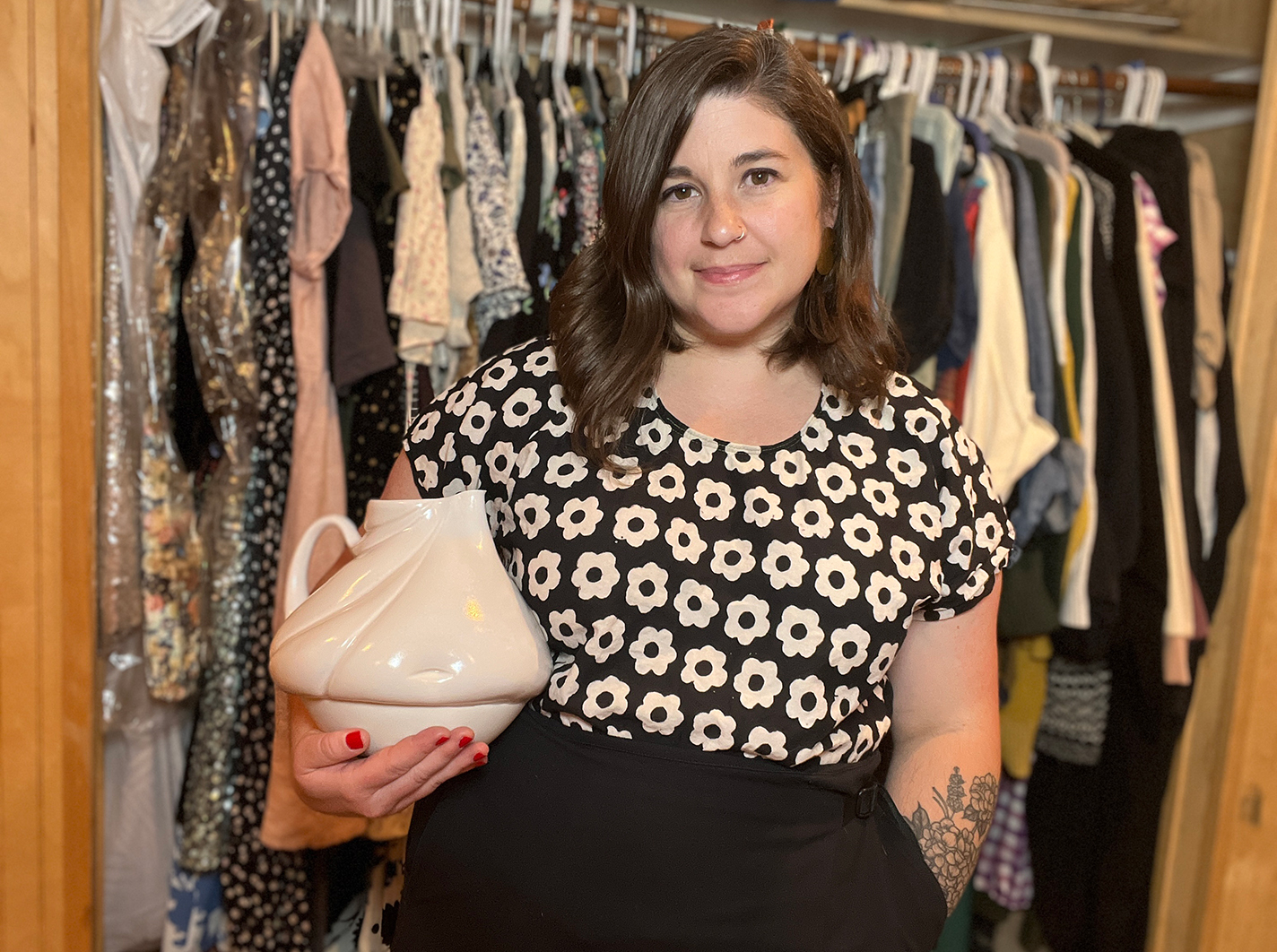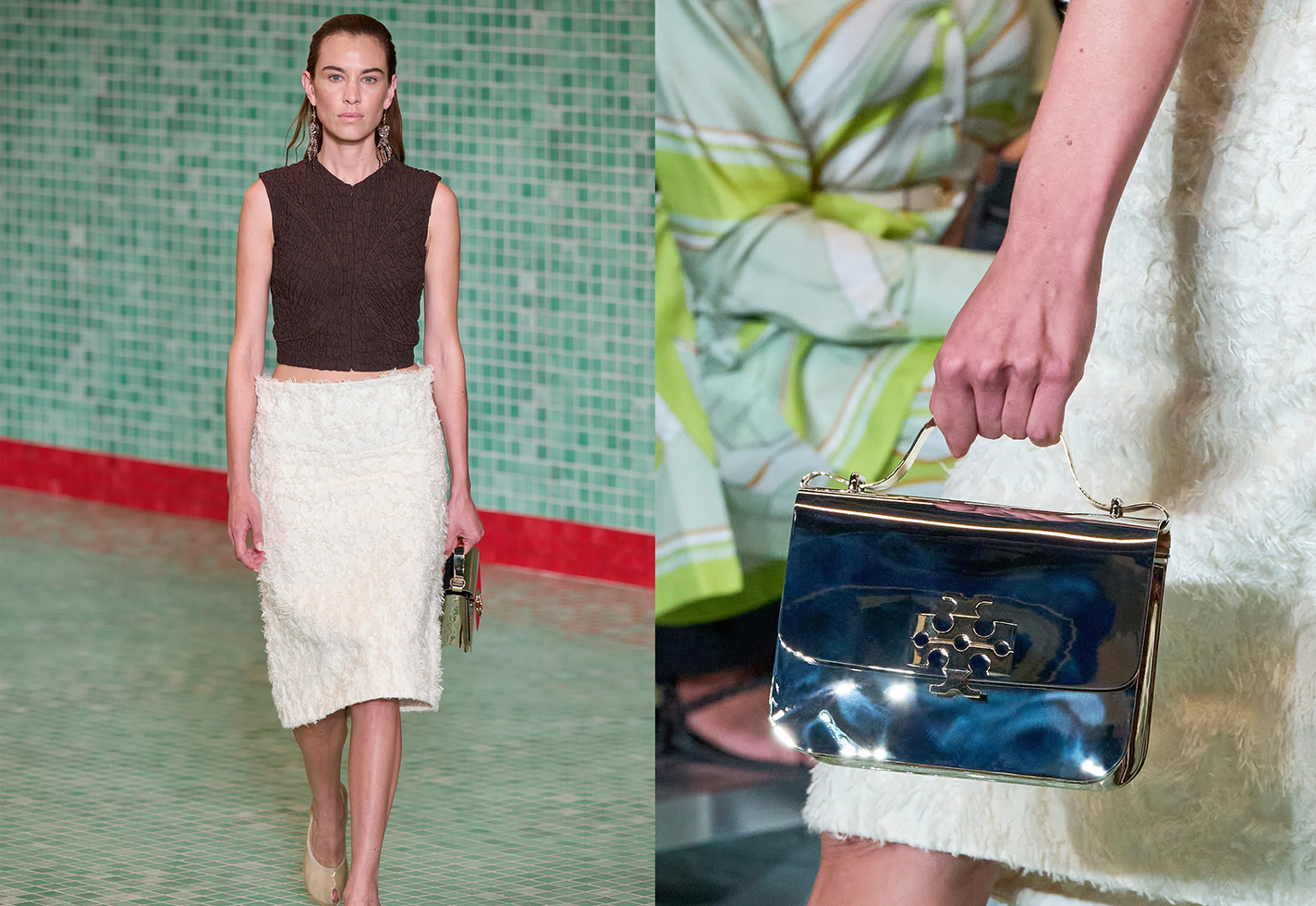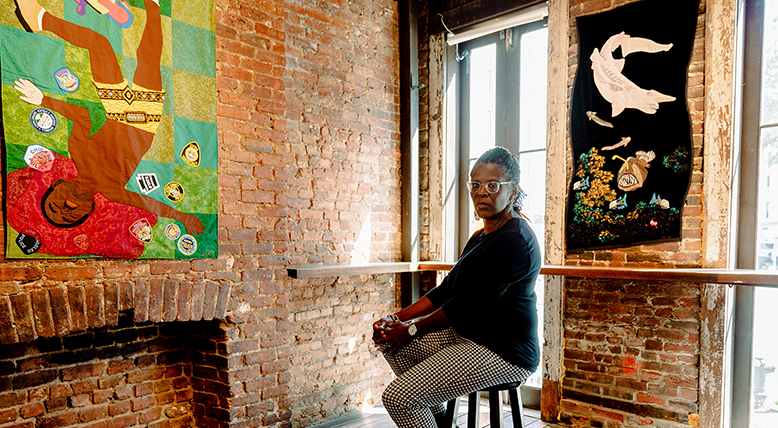Nosheen Iqbal’s art stretches embroidery to the limit.
Using beads and thread, the Dallas-based artist and designer stitches intricate, three-dimensional geometric designs drawn from Islamic and South Asian art onto custom-made wood panels. Trained as a designer, she worked for Fossil designing watches for a decade. Her connections in the world of design have opened up opportunities in the corporate and hospitality field, where she has made work for the likes of JW Marriott and Hermès. Iqbal’s work—especially its muted color palette—draws inspiration from her Pakistani heritage with eyes toward the now. “Craft, for me, is both preservation and dialogue that’s a bridge between past and present, East and West, and a way to preserve generational connection,” she says. Iqbal’s work appears in CraftTexas 2025, the 12th iteration of Houston Center for Contemporary Craft’s juried exhibition of Lone Star State craft artists, which runs through January 31, 2026. Read more about the show in Craft Happenings in the Fall 2025 issue of American Craft.
How do you describe your work or practice in 50 words or less?
My practice centers on embroidering through wood that integrates beadwork, layering patterns, and dimensional botanicals. Inspired by Pakistani textiles, Islamic geometry, and architectural relief and fresco work, I reinterpret tradition in contemporary forms.
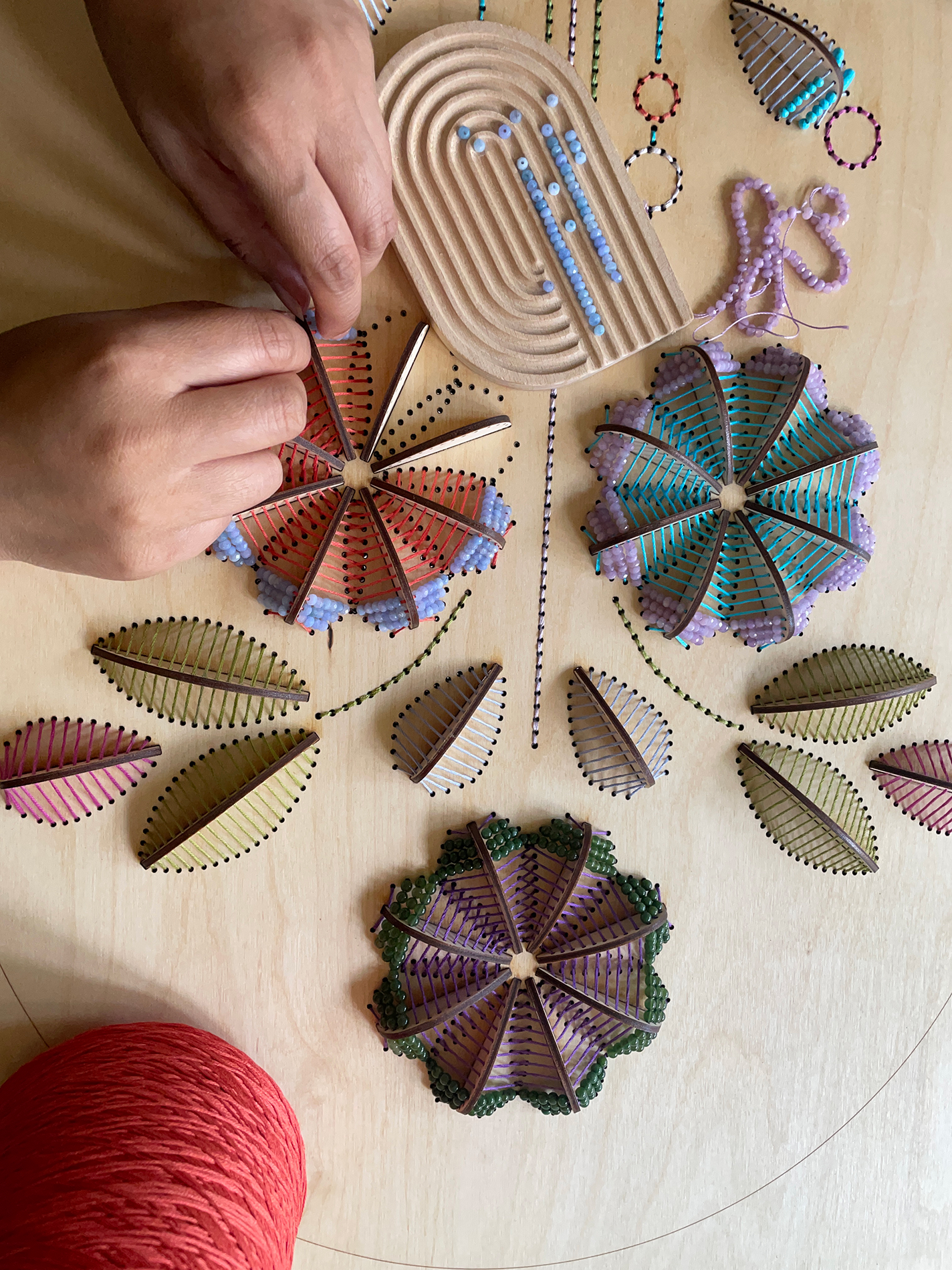
A detail shot of Iqbal's installation Botanical Allegory, 2025, Baltic birchwood, cotton fiber, semiprecious beads, hand embroidery.
